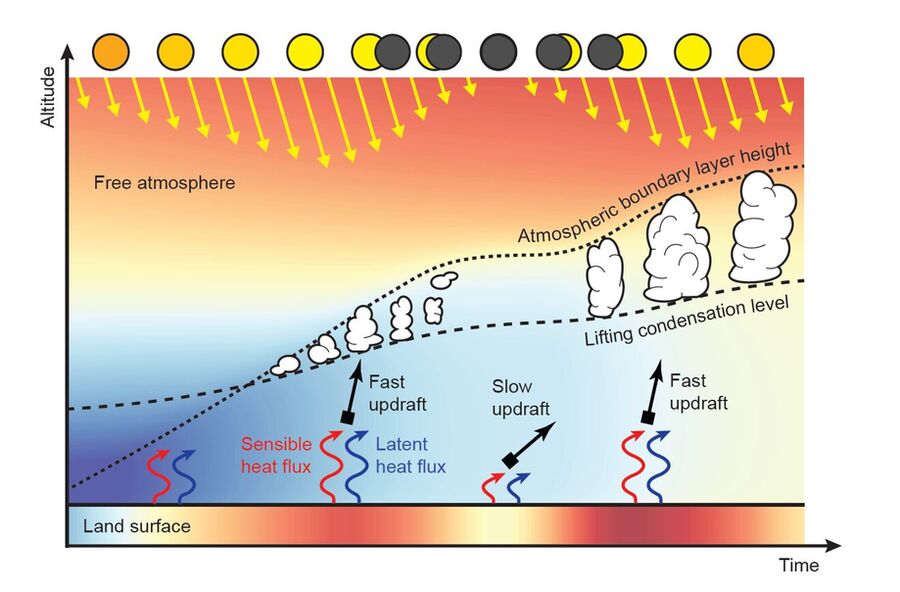
Although the effects of solar eclipses have been studied for centuries, it was never known exactly how strongly clouds react. " From Earth you can count the clouds and see them disappear, but that only gives anecdotal evidence ", explains PhD student Victor Trees. " Clouds change constantly even without solar eclipse. "
Measure solar eclipses from space
Satellites in a geostationary orbit around the Earth can continuously measure many clouds at the same time, in large areas including impassable terrain. In the case of a solar eclipse, the measurements were previously not reliable. The algorithms of the satellites did not take into account the decrease in sunlight during solar eclipses. This resulted in large dark spots in the cloud maps of the earth.
We have now managed to restore the satellite measurements during solar eclipses by accurately calculating the percentage of the sun darkened for each location and time on Earth. " By far the majority of the solar eclipse consists of a partial eclipse, in which it is usually still full of light outside ", says Trees. The satellites still receive enough reflected sunlight there to reliably measure the clouds after the correction for the eclipse.
Stack clouds over land appear to be very sensitive to solar eclipses
In the recovered cloud maps during three solar eclipses over Africa, the researchers see that cumulus clouds are already starting to disappear on a large scale with an eclipse of 15% of sunlight. When the solar eclipse is over, the cumulus clouds return. On days when there is no solar eclipse, this cloud behavior does not occur.
The disappearance and appearance of clouds has also been successfully simulated with the Dutch cloud model DALES. The model shows that the rising air is affected almost immediately when using the partial darkening. Above the sea, the clouds remain unaffected during a solar eclipse, because the sea water does not cool as quickly as the ground.
Possible consequences for climate engineering
There are ideas for the earth to cool artificially by, for example, bringing reflective solar sails into the space or aerosols into the stratosphere. These provide a subtle and potentially varying solar eclipse. But with a partial eclipse, clouds begin to disappear en masse, Trees' research shows: " This could be a warning for climate engineering. If we were to darken the sun with technological solutions in the future, this could have an effect on clouds. Fewer clouds could partly negate the intended effect of climate engineering, because clouds reflect sunlight and thus help cool the earth. " In addition, clouds determine the local precipitation patterns.The high sensitivity of clouds to solar eclipses requires more research into the possible consequences of artificial shadows.
Read the full publication
Victor J. H. Trees, Stephan R. de Roode, Job I. Wiltink, Jan Fokke Meirink, Ping Wang, Piet Stammes and A. Pier Siebesma. Clouds dissipate quickly during solar eclipses as the land surface cools. Nature Communications Earth & Environment. February 12, 2024.



Either way, this effect must be most pronounced if one is within the ribbon of the eclipse...